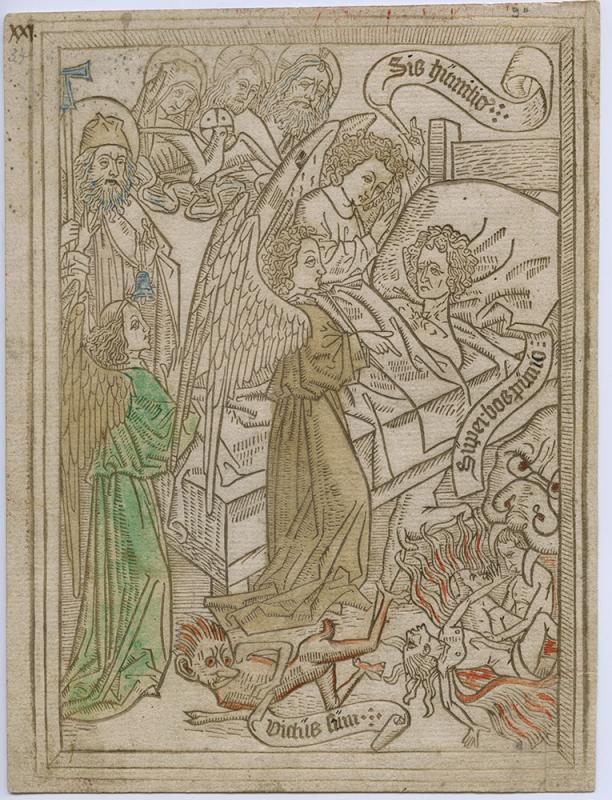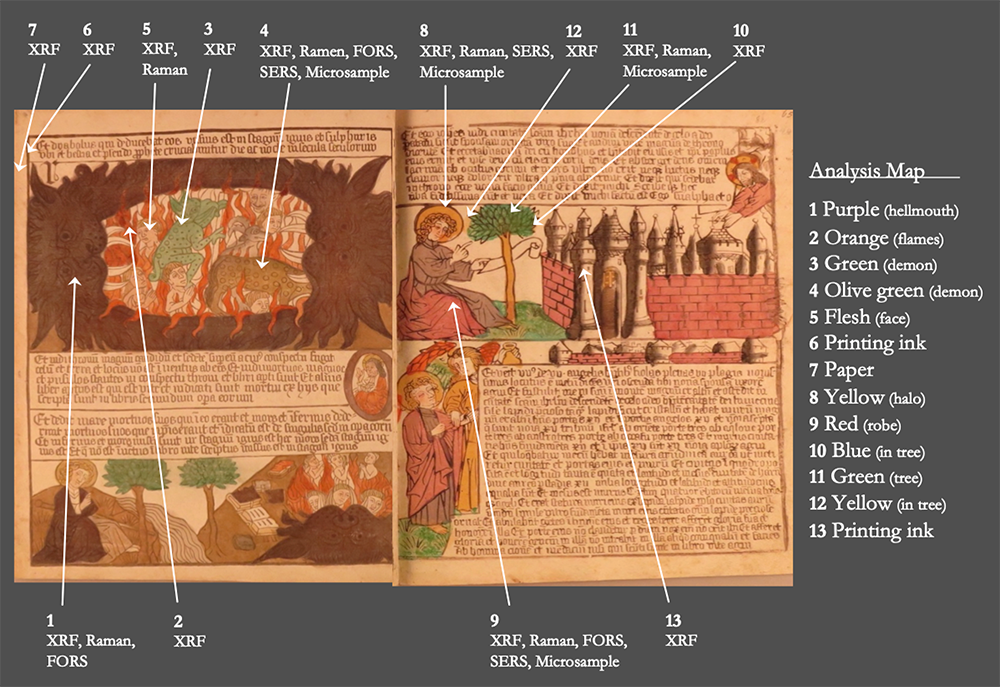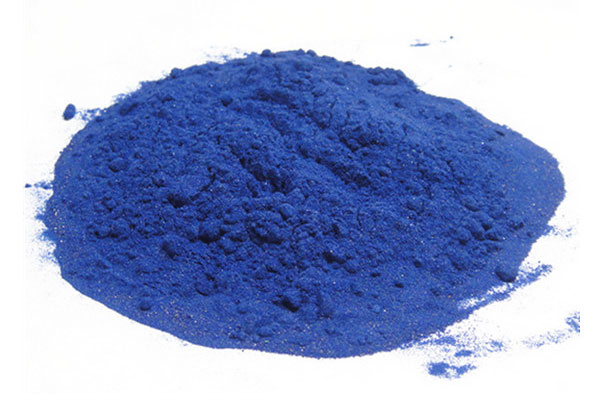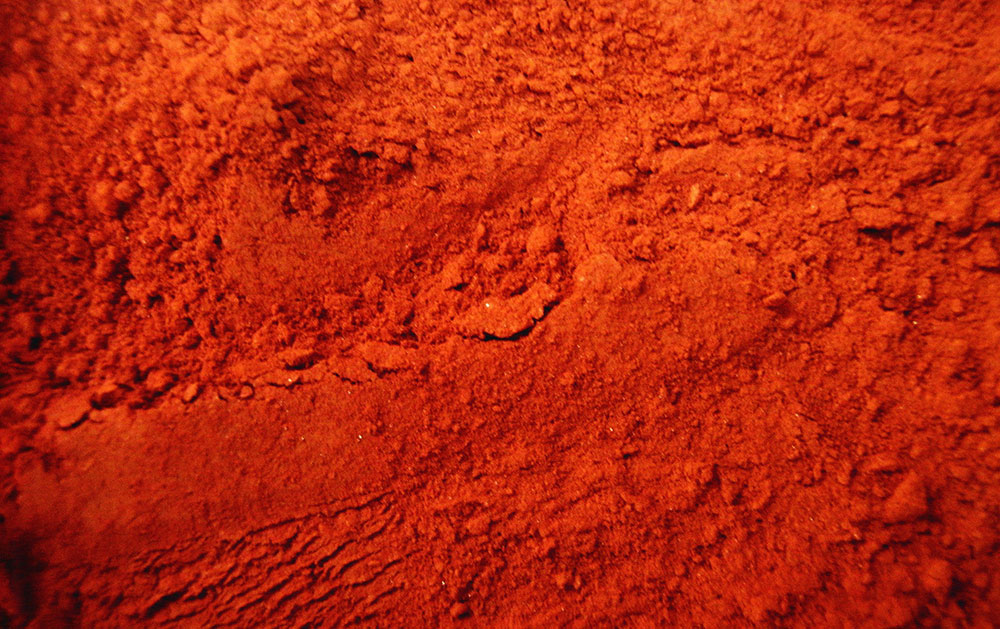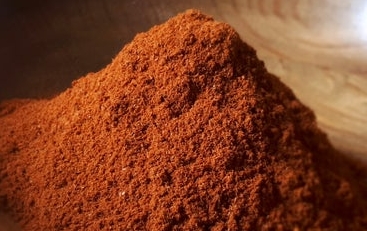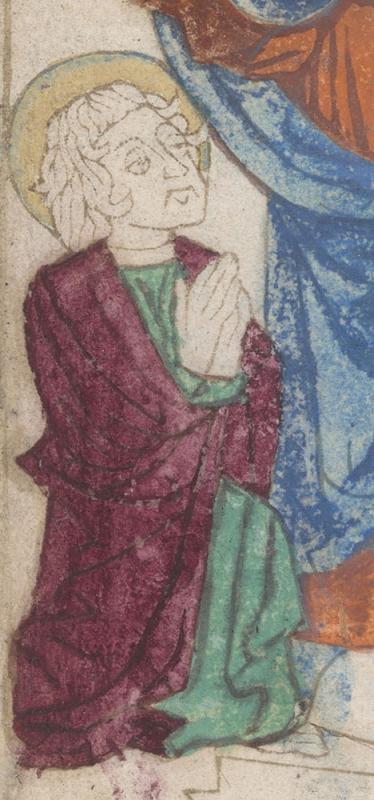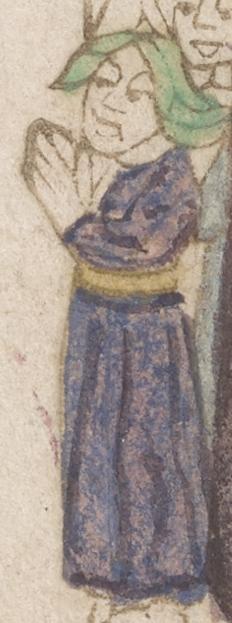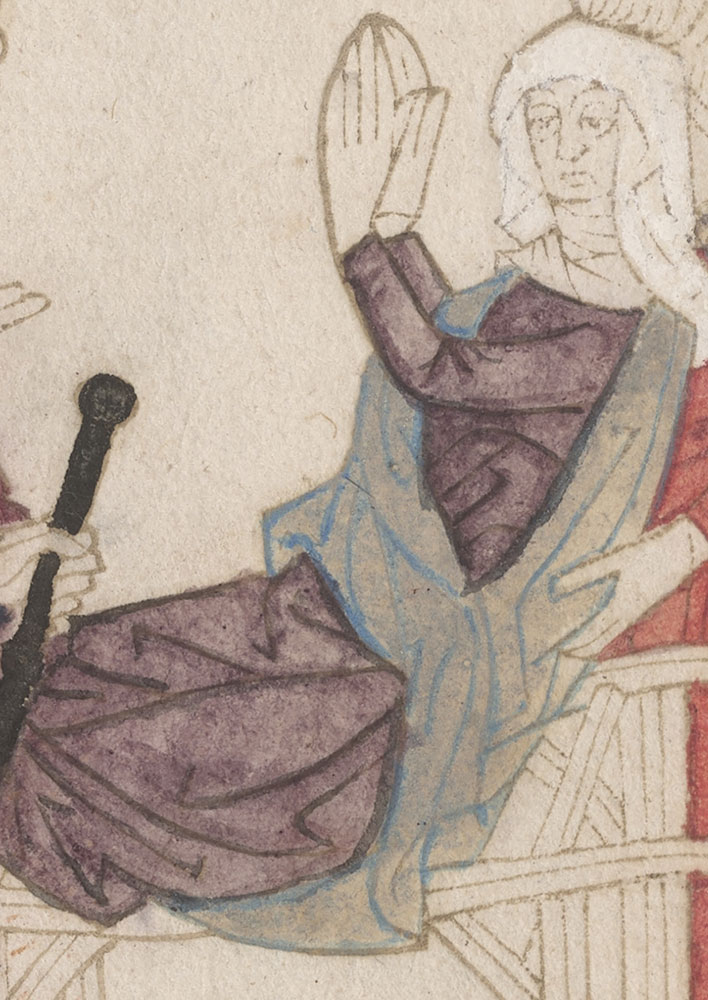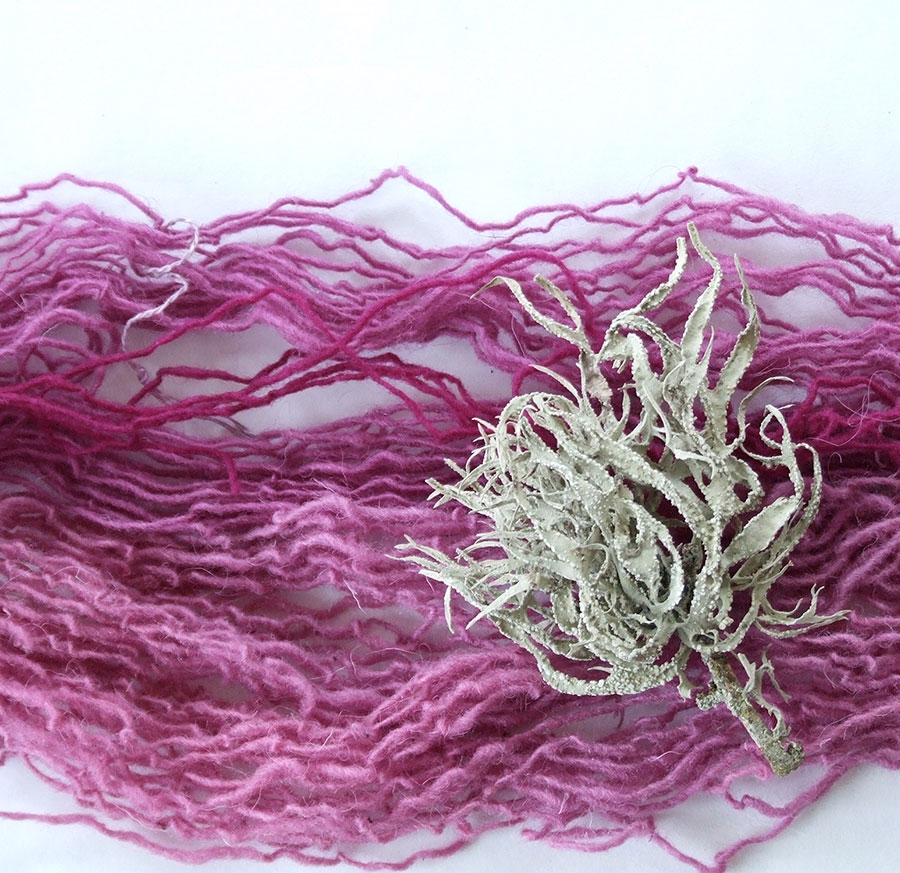
Figure 3: Apocalypsis Sancti Johannis, Germany, ca. 1470, PML 8, fol. 43v
The Morgan owns the largest collection of block books in North America and they were some of J.P. Morgan’s earliest acquisitions. These are books in which both the images and the text are carved from a single woodblock, hence the term block book. The majority of these books were produced in Germany and the Netherlands in the mid to late fifteenth century, a transitional period in book printing history. The most common block books at the Morgan follow in a tradition of medieval manuscripts, and include multiple copies of Ars Moriendi (the Art of Dying),1 Biblia Pauperum (Bible of the Poor)2 and the Apocalypsis Sancti Johannis.3 Demons, angels, and biblical figures and scenes make up the lively images contained in these books which served to help the literate teach others. These books can be considered the graphic novels of their time.
Some of the Morgan’s block books are elaborately hand-colored on every plate, while others have little or no color. When colored, they tend to have a limited color palette including orange, red, green, yellow, and black, with few examples of blue and purple, and yet these colors are enough give life to the figures and creatures.

Figure 4: Canticum canticorum, 1465, raking light view of embossed versos, PML 21990
All the Morgan’s block books were printed on high quality white paper and nearly all of on folded sheets of Chancery size paper (approx. 12 x 17 1/2 inches (31.5 x 23 cm). The text and images were printed in brown or black ink on only one side of the sheet of paper. The versos of the sheets were intentionally left blank as the paper was strongly embossed by the pressure needed to print the wood block. This uneven surface made the versos unusable for printing. (figure 4). The carved woodblocks were saved for many years, and printed in small editions or "on demand". It appears that nearly every time a set of woodblocks was used to create a block book, the paper stock, printing ink, colors and format were chosen anew, and so each book is unique.
A collaborative study began in 2019, undertaken with Associate Curator of Printed Books, John McQuillen and Federica Pozzi and Elena Basso, Research Associates of the Network Initiative for Conservation Science.4 We wanted a better understanding of the materials used in this transitional period in book printing. For many years, block books have been considered anomalies in the world of printed books. In the mid fifteenth century manuscript illumination was waning and the use of moveable type was spreading. Using all the technical equipment available through this partnership, Pozzi and Basso took over 250 readings with a range of non-invasive techniques and removed twenty-four micro-samples for analysis from thirteen books so we could identify and categorize the multitude of colors and inks present. It was necessary to use a combination of techniques to build an accurate picture of the colors we saw.5
Scientific analysis of the color palette used in the Morgan’s block books has revealed the use of both mineral pigments and organic dyes, often combined in complex mixtures. The pigments discussed here were all known and available in the fifteenth century, most in use since ancient times. They tend to be inexpensive colors, with formulations that follow the traditions of medieval illumination, but are applied with less finesse and precision than we see in great manuscript illuminations.
Here is a brief discussion of some of the colors identified.

Figure 6: Flames made of red lead inside the mouth of hell in PML 8

Figure 7: Mineral form of red lead (minium) credit to By Rob Lavinsky, iRocks.com – CC-BY-SA-3.0, CC BY-SA 3.0
Orange, made from red lead, was present in nearly all the block books. Red lead is dense and granular and has strong covering power. It is often seen in the fires of hell or angels wings. It has been in use since the fifth century BC and is made by roasting lead white. We also found some examples of orange, made of red lead mixed with a small amount of vermilion or red ochre. In only one case (figure 8), in the stripes of the halo, do we see an orange made of a mixture of lead tin-yellow with vermilion. All these pigments were known in this period and are seen in manuscript illumination of earlier periods.
Most block book yellows are made of organic dyes. The dyes are thin and translucent, easily allowing the printing ink to show through the wash. There were many yellow dyes at this time, made from common plants including saffron, safflower, turmeric, saw-wort, weld and buckthorn. They were used on fabrics, as well as paper and parchment. It is often difficult to identify organics but with some micro-sampling and laborious liquid chromatography, scientists Pozzi and Basso identified Buckthorn (Persian berries) in several samples6 (figures 9, 11, 12). Mixing of dyes with pigments was common in manuscript illumination, and we found similar mixtures in the Morgan’s block books. All yellow dyes are sensitive to light and will fade with exposure, so it can often be hard to determine the original color, as faded yellow often looks like pale brown (figure 10).
Blues are rarely present in our block books. All were found to be azurite7 based. Although not as expensive as ultramarine, azurite was more costly than most earth pigments and dyes which probably explains why so few examples are seen. Azurite is made from grinding up the mineral which contains many different forms of copper. Larger pigment particles make a darker blue. Particularly interesting was the discovery of a mixture of azurite and smalt8 in PML 5 (figures 13, 14). Scientific analysis showed traces of the elements Cobalt and Bismuth in this sample, which indicate smalt produced in Central Europe (Saxony and Germany).
There are many varied red tones in the block books, but they do fall into clear groups. Some are pure vermilion, but most common are mixtures of vermilion9 with some red lead. These reds are generally somewhat opaque, although they may be applied in a thin layer. (Firgures 16, 17) We also identified the organic dye, Brazilwood10 in several locations. This light sensitive dye was used alone to make a moderately transparent wash, or mixed with other pigments and dyes to make darker and richer reds. (figure 18) One brown-colored lion was proved to be Brazilwood that had faded with long exposure to light (figure 19).
Carmine11 also known as kermes, (figures 21, 24) is an organic dye made from insects. It was identified in a very few places, as it was rare and expensive. In PML 5, it was used to make two different purple colors. In one red-purple robe, (figure 21) carmine appears to be the main constituent but is mixed with small amounts of fine azurite; in the second example, a thick, powdery layer of azurite was applied on top of the carmine to produce a blue-purple robe. (figure 22) The third purple in PML 5, (figures 23, 25) a red-violet color, was identified as pure orchil12 a lichen-based dye which was frequently used on fabrics. It is unusual to see three purple variants with three different formulations and techniques of application on the same page, yet all of these dyes and pigments were known and used in the fifteenth century.
Greens were difficult to identify precisely with non-invasive techniques. Nearly all contain a copper-based pigment, which could be a copper green or copper blue,13 both of which were mixed with yellow. Based on XRF data, visual examination, and on the lack of corrosion of the paper, we believe that most greens are mixtures of azurite with an organic yellow (figure 26). In many places the two colors are thoroughly mixed before application to the paper, but in the angels’ wings in PML 7 (figure 27) we can clearly see that azurite blue and possibly a malachite green were mixed and applied over a yellow organic base.
As noted earlier, all the pigments discussed were known and available in the fifteenth century. Identification of these colors through close looking and scientific analysis and their consistent use in many different blockbooks, indicates that the books were colored contemporaneously with printing.
The next installment will discuss the problematic pigments found in some block books.
End notes

